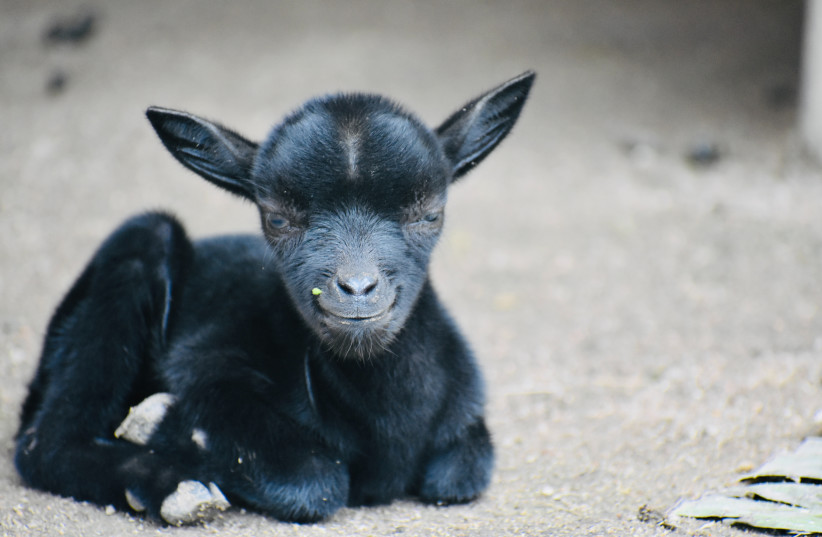The first part of our double parasha this week, Aharei Mot, begins by describing many of the rituals that constitute the core practices of Yom Kippur as found in the Torah. Later they were developed and adapted in the Mishna, Talmud, and eventually as the Avoda section of the Mussaf service found in the Mahzor prayer book for that most holy of days within the Jewish calendar.
In all its iterations, the order of expiation has been the individual, originally Aaron in his capacity as the high priest (Lev. 16:6), and then his family (Lev. 16:6), the Sanctuary (Lev. 16:16), and finally the entire community (Lev. 16:21).
That structure reminds us that to effectively change society, we must first begin with ourselves, then our families, followed by the institutions of society, and finally the fullness of our body politic.
Woven within the atonements and restorations of the day is the rite of the Azazel – the sending off of a goat into the wilderness, “to carry on it all their iniquities to an inaccessible region” (Lev. 16:22). Symbolically, this goat took away the transgressions of the people.
We may ask, “Okay, they were taken away symbolically, but that is only a symbol, so what good was it? Moreover, what meaning can it have for us today?”
Why does holiness matter?
Decades ago, a congregant knocked on my office door. He was distraught and feeling guilty for something that had happened. He was tangentially responsible at the most. It was close to Rosh Hashanah, when we would do tashlich by the Battenkill River behind the synagogue. I suggested to the congregant that he join us for tashlich, and that as he cast his pieces of bread into the river, he should symbolically imagine his guilt being carried away by the waters of the river. A few weeks later, he once again knocked on my office door and informed me that since doing tashlich, he had felt so much better. There can be a profound power in symbols, often when tied to ritual.
AS PART of the Yom Kippur instructions, we are told: “And this shall be to you a law for all time... you shall practice self-denial; and you shall do no manner of work, neither the citizen nor the stranger who resides among you. For on this day expiation shall be made for you to purify you of all your sins; you shall be pure before the Lord” (Lev. 16:29-30).
“And this shall be to you a law for all time... you shall practice self-denial; and you shall do no manner of work, neither the citizen nor the stranger who resides among you. For on this day expiation shall be made for you to purify you of all your sins; you shall be pure before the Lord”
Leviticus 16:29-30
In the Mishna (Yoma 8:1), self-denial is defined as being forbidden to eat, to drink, to wash, to anoint oneself, to put on sandals, or to have sexual intercourse. This denial is not for punishment or to inflict suffering but rather, to show we have agency. These actions, which we do the rest of the year, affirm life, make our lives more comfortable, and can bring pleasure. In essence, they are all good and can enhance our lives. The latter can create life itself. The charge of Yom Kippur is to show that if we can control those activities for all their positive elements, then for the rest of the year we have the power to curb and overcome yearnings we would be better off avoiding.
Rabbi Dorothy Richman reminds us that self-denial should be limited in how and how often we practice it. Addressing some voices within the tradition that favorably express self-denial as a way of support when others suffer (Ta’anit 11a; Shulhan Aruch, Hilchot Ta’anit, 674:4), she writes (on myjewishlearning.com):
“A hassidic story describes a wealthy man who prides himself on his self-denial. He comes to his rabbi’s home and brags that he eats only bread with salt and drinks only water. The rabbi, horrified, orders the wealthy man to eat rich and nutritious meals and to drink wine. After the rich man leaves, the rabbi’s disciples are puzzled. The rabbi explains, ‘Not until he eats meat will he realize that the poor need bread. As long as he himself eats only bread, he will think the poor can live on stones.’
“It can be tempting to deprive ourselves of pleasure rather than face the challenge of repair. Yet self-denial for the sake of solidarity is a waste of privilege. It is imperative to use our gifts of wealth, education and influence to improve conditions for the poor and powerless.”
AT THE end of the day, the goal for Yom Kippur and every day is to live a holy life. In that light, it is logical that the parasha after Aharei Mot is Kedoshim (holy ones), our second parasha this Shabbat.
We are told at the beginning of the parasha, “You shall be holy, for I, the Lord your God, am holy” (Lev. 19:2). What does it mean to be holy?
Being holy is a state of mind. It is an awareness that floods the soul so that we see, so that we experience, not that everything is God (pantheism) but rather that everything, all existence, is within and is an extension of God (panentheism).
When it comes to explaining panentheism, Rav Hillel Rachmani (on etzion.org.il) makes the comparison of a leaf and a tree: the leaf is not the tree but is a part of the tree.
That interrelated orientation of holiness places all things within a web of mutuality. That is the inner logic for the concentric circles of the Avoda service of Yom Kippur. It creates a dialogue and concern which radiates out and then back among the individual, the family, the structural institutions of society, and the body politic we live in. In the thinking and the words of the Torah, that is the path to living a holy life every day of the year. ■
The writer, a Reconstructionist rabbi, is the rabbi emeritus of the Israel Congregation in Manchester Center, Vermont. He teaches at the Arava Institute for Environmental Studies at Kibbutz Ketura and at Bennington College.

